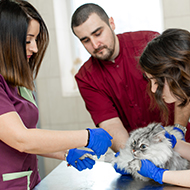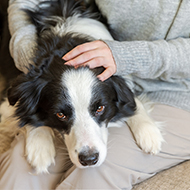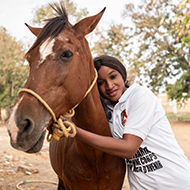Dog-robot interactions studied
Study looks at the social reactions of dogs
Research published in the journal Animal Cognition has suggested that dogs interact more readily with robots that show social behaviour than those that are asocial.
An animal behaviour study tested 41 dogs, which were divided into two groups - those that were exposed to a "social" robot and those that were exposed to an "asocial" robot.
The robot does not look like a human, but resembles a piece of gym equipment with a white gloved hand that can make simple gestures and grasp objects.
It was programmed to either show social behaviour, such as calling a dog by its name, or to display asocial, machine-like behaviour.
The dogs in both groups first watched an interaction between their owner and a human experimenter, followed by an interaction between their owner and a robot.
Dogs in the social group saw a social interaction between the owner and robot, while the asocial group saw a non-social interaction. Both groups then interacted with first the robot, then their owner.
The human experimenter and robot then pointed out the location of some hidden food to the dogs in both groups.
Researchers found that while the dogs did not react to the social robot in the same way as they would a human owner, they did show positive social reactions. For example, the dogs spent more time near the social robot or gazing at its head than the asocial robot.
The dogs also had more trouble finding the food when a robot, rather than a human, pointed it out to them, but found the social robot's directions easier to follow than those of the asocial robot.
Image credit: Eniko Kubinyi






 Birmingham Dogs Home has issued an urgent winter appeal as it faces more challenges over the Christmas period.
Birmingham Dogs Home has issued an urgent winter appeal as it faces more challenges over the Christmas period.
